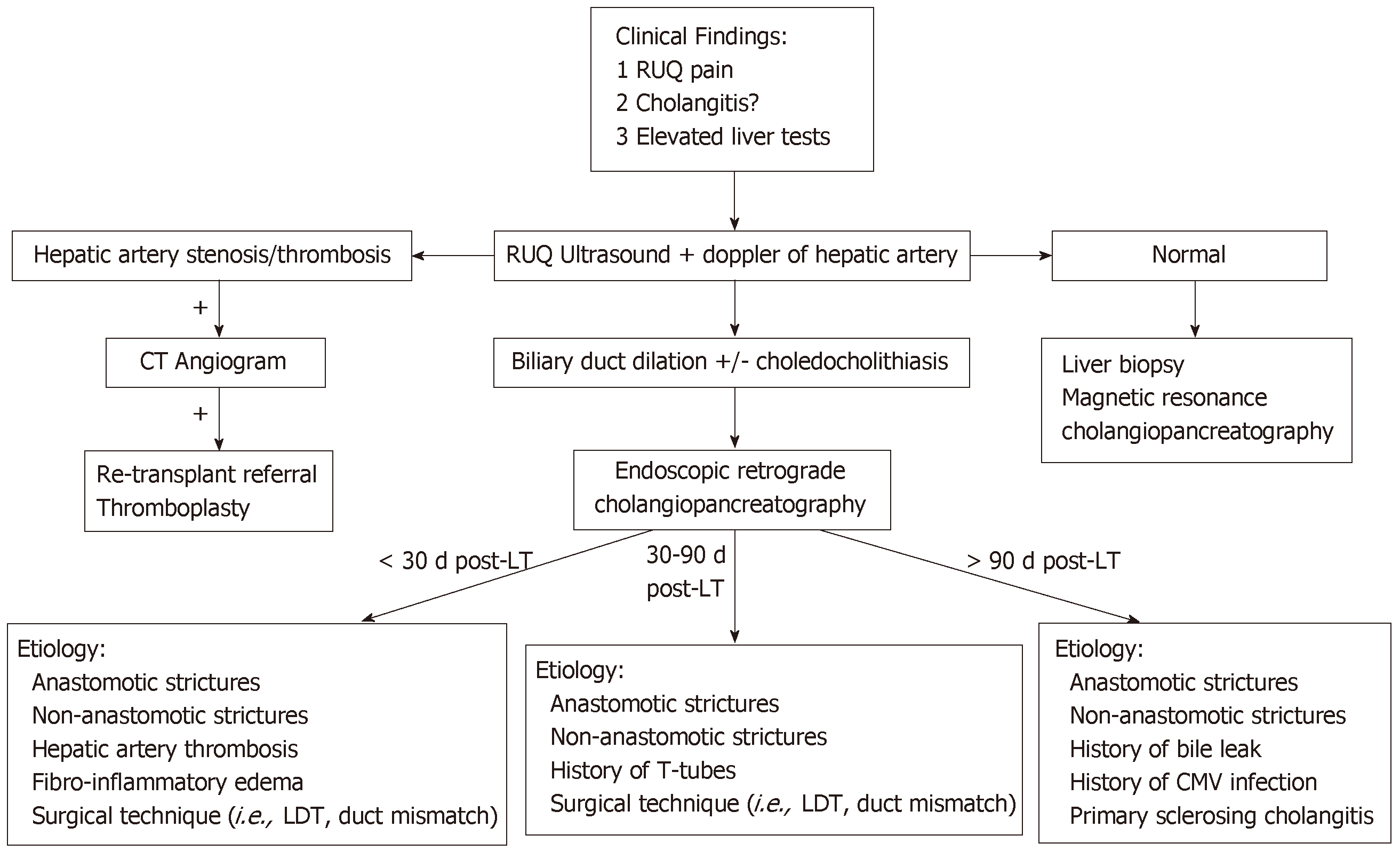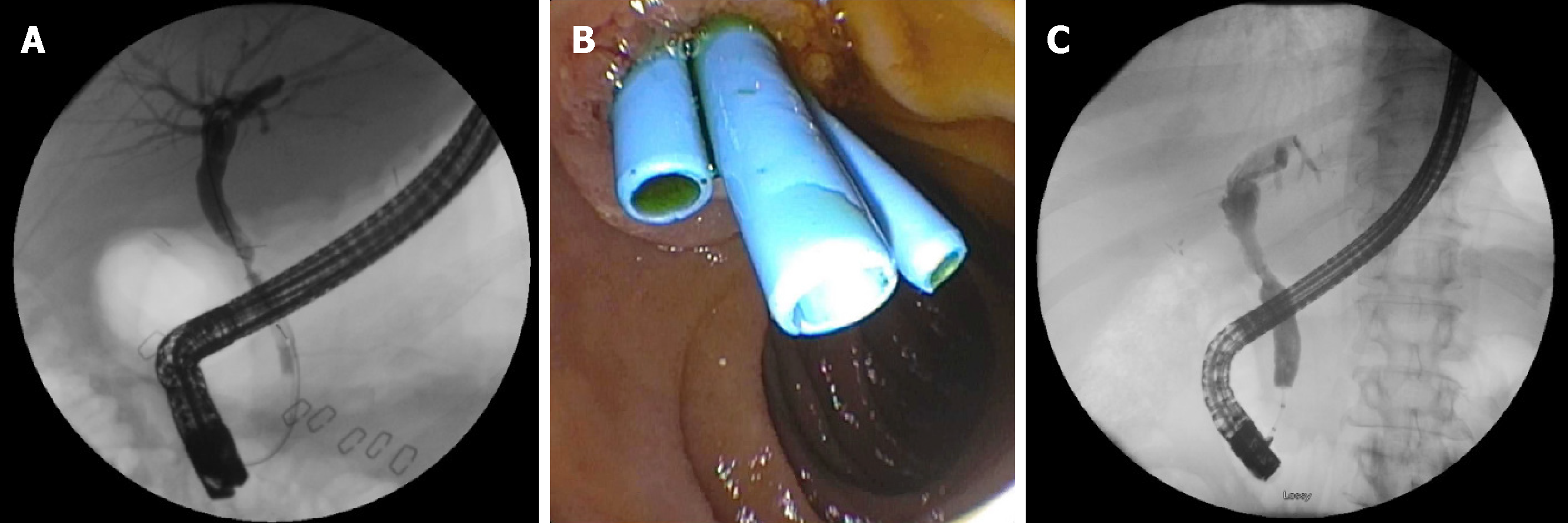Copyright
©The Author(s) 2019.
World J Meta-Anal. Apr 30, 2019; 7(4): 120-128
Published online Apr 30, 2019. doi: 10.13105/wjma.v7.i4.120
Published online Apr 30, 2019. doi: 10.13105/wjma.v7.i4.120
Figure 1 Evaluation of suspected bile duct strictures post-liver transplantation.
LDT: Living donor transplantation; LT: Liver transplantation; RUQ: Right upper quadrant.
Figure 2 Anastomotic bile duct stricture managed with biliary stenting and balloon dilation.
A: A patient less than 60 d post-liver transplantation who presented with elevated liver tests and found to have an anastomotic bile duct stricture; B: The patient was managed with serial balloon dilation and multiple biliary stents; C: Approximately 9 mo post-liver transplantation the anastomotic stricture had resolved and required no further intervention.
Figure 3 Anastomotic bile duct stricture treated with rendezvous technique.
A: A 56-year-old patient who presented two years after transplantation with jaundice and found to have a severe anastomotic stricture which was not able to be traversed with a guidewire; B: Percutaneous transhepatic cholangiogram showing a stricture at the anastomosis with the guidewire inserted through the transhepatic tract; C: The rendezvous technique was used to advance the endoscopic catheter over the transhepatic guidewire and proximal to the anastomotic stricture; D: A fully covered metal biliary stent was placed traversing the anastomosis.
- Citation: Akhter A, Pfau P, Benson M, Soni A, Gopal D. Endoscopic management of biliary strictures post-liver transplantation. World J Meta-Anal 2019; 7(4): 120-128
- URL: https://www.wjgnet.com/2308-3840/full/v7/i4/120.htm
- DOI: https://dx.doi.org/10.13105/wjma.v7.i4.120











